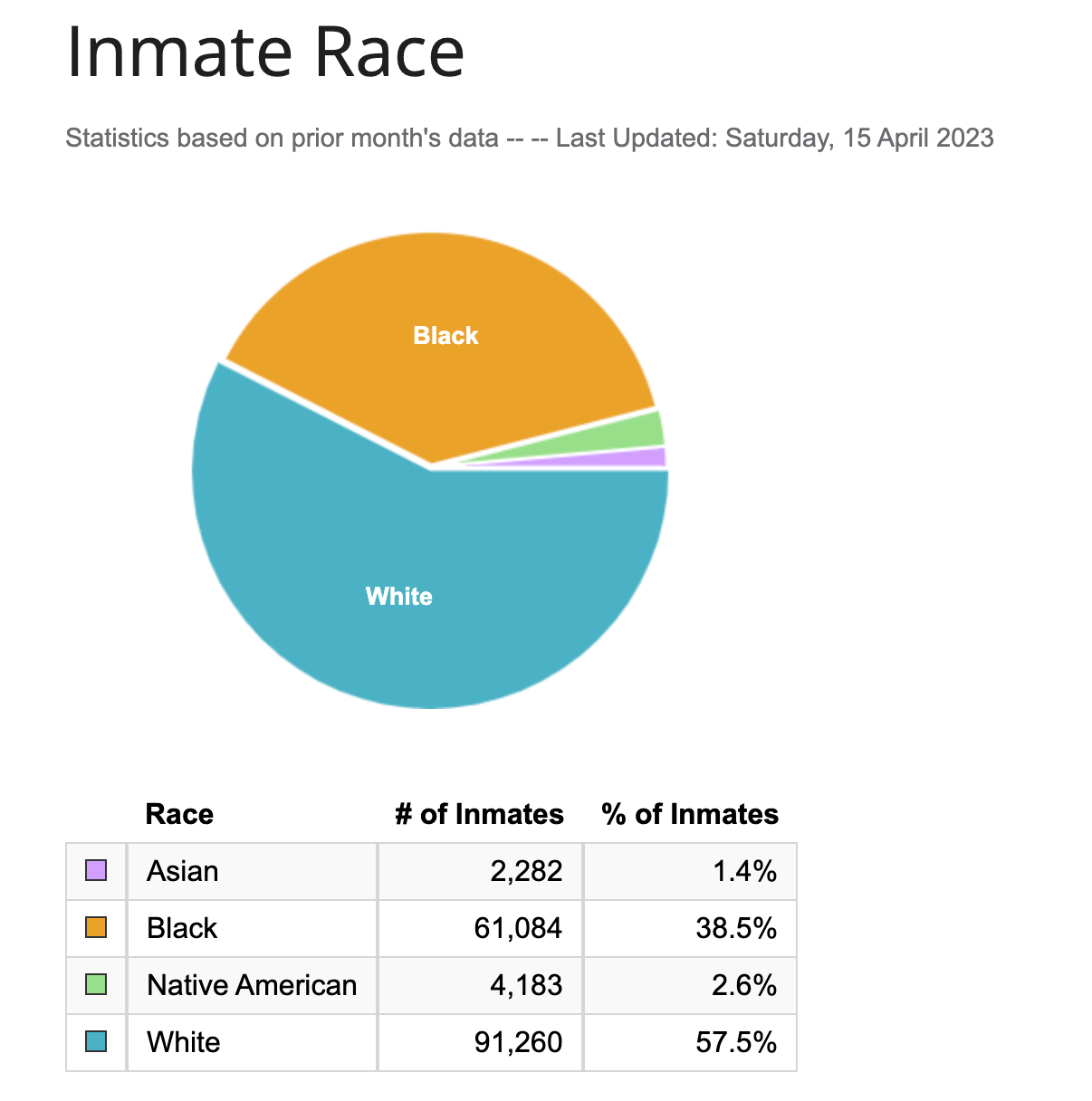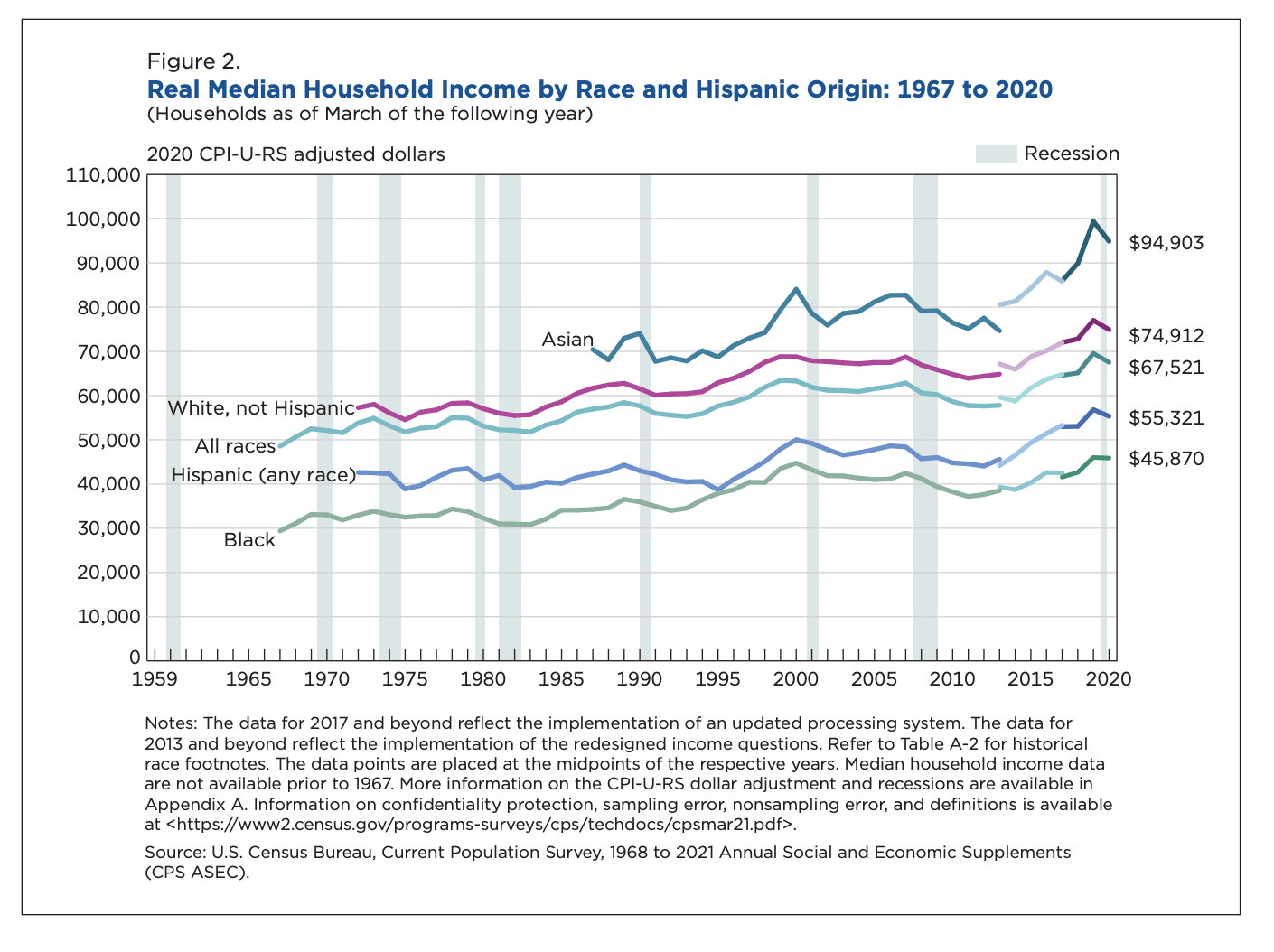This post was inspired by a similar Reuters piece on how systemic racism plays out in black lives. Note that the piece provides zero evidence that any of the outcome gaps discussed are caused by “systemic racism” — it simply highlights areas in American life where black outcomes lag behind white outcomes and concludes the cause must be racism. But is that a reasonable conclusion?
If the same gaps exist between white Americans and every racial group that has ever faced systemic racism in America, the case would be stronger. If, on the other hand, Asians outperform whites, then should we conclude that there is now systemic racism against whites?
Let’s dive in and see.
Maternal mortality / infant mortality
Of every 100,000 live births, 39.9 black women die of pregnancy-related causes, compared with 13 white mothers. Hispanic women? 11.6. What about Asians? 12.8.
What about infant mortality? Of 1000 live births, 11 infants born to black mothers and 4.5 born to white mothers die before their first birthday. Asian mothers? Just 3.4.
Reuters used 2018 data, but 2019 data is available and looks slightly better. 19% of black households and 8% of white households faced food insecurity. There is no Asian category in the USDA data, but nonprofit Feeding America estimates that 6% of Asians are food insecure.
According 2019 data from the U.S. Department of Education, of those aged 25 and over, 40% whites had bachelor’s degrees or higher, while 26% of black people did. Meanwhile 59% of Asians over 25 held a bachelor’s degree or higher. Note that the black/white gap is actually smaller than the white/Asian gap for this metric. So does that mean that there’s systemic racism against whites that suppresses their ability to keep up with Asians in education?
Test scores
Every standardized test I’ve looked at has the same race ranking: Asians score highest on average, followed by whites, then Hispanics and blacks score lowest. This holds for the SAT, ACT, MCAT, GRE, and LSAT. Are these tests racially biased against whites?
Healthcare
Data from 2017 show 13.6% of black adults aged 18-64 lacked health insurance. Compared with 8.4% of whites and 8% of Asians. It seems that Asians are faring better than whites again, and are therefore conveniently excluded from the analysis.
I attempted to pull up the data from the United States Sentencing Commission about sentencing for Asians, but in their full report on demographic differences in sentencing, the word “Asian” does not appear a single time in 49 pages.
Meanwhile, the FBI’s Bureau of Justice Statistics report, “Race and Ethnicity of Violent Crime Offenders and Arrestees, 2018” concludes “black people were overrepresented among persons arrested for nonfatal violent crimes (33%) and for serious nonfatal violent crimes (36%) relative to their representation in the U.S. population (13%).” By comparison, “White people were underrepresented. White people accounted for 60% of U.S. residents but 46% of all persons arrested for rape, robbery, aggravated assault, and other assault, and 39% of all arrestees for nonfatal violent crimes excluding other assault.” Asians were even more underrepresented in arrests at 1.5% (compared with 5.7% of the U.S population).
The above chart from the Bureau of Prisons shows whites are slightly underrepresented amongst inmates, but Asians are even more so. Meanwhile, blacks are overrepresented at about a 3x rate.
Reuters cites the Sentencing Project’s report on felony disenfranchisement, which shows that 7.4% of the voting age black population has lost the right to vote due to being convicted of a felony, versus 1.8% of non-blacks. Again, the report includes no mention of Asians. However, felony disenfranchisement is contingent upon being convicted of a felony, and Asians are underrepresented in felony convictions.
According to the Census Bureau, median household income has been higher for Asians than all other racial groups since data collection on Asians began in the mid-1980’s. In fact, the gap between Asian and non-Hispanic white household income is increasing, while the other gaps remain more steady.
Similarly, the Census Bureau’s report based on 2019 data shows Asians had the highest median household wealth ($206,400), this figure was $187,300 non-Hispanic whites, $31,700 for Hispanics at and finally, $14,100 for blacks.
Conclusion
Here’s a subtle but often missed point: outcome gaps do not necessarily imply racism. For example, I think we can all agree that arrests and convictions should depend on whether an individual committed a crime, and not on whether these rates match the census.
If we fail to account for all relevant inputs, any conclusions about outcome gaps will be flawed. I hope I have managed to show that in the foregoing analysis. Otherwise, if we believe the “unequal outcomes are caused by systemic racism alone” frame of Kendi-style critical race theory, this nonsensical conclusion follows:
“Whites are now experiencing higher maternal and infant mortality than Asians. They are incarcerated at higher rates. Their test scores are lower and they have lower educational attainment over all. Median household income and household wealth are lower for whites than Asians. Whites also experience food insecurity at greater rates and are less likely to have health insurance than Asians. Oh, won’t you pity the white man and all that systemic disadvantages hath wrought on his life outcomes?”
P.S. — Before you try to dismiss this post as the “Model Minority Myth” I hope you’ll please explain why white supremacists would let Asian outcomes surpass white outcomes, since they’re the grand masterminds behind all of it?





Hi Diane,
Per Kevin MacDonald, Espenshade and Radford show that there is discrimination against poor whites and against non-urban whites—exactly the population groups that are least likely to be Jewish. There is a “a general disregard for improving the admission chances of poor and otherwise disadvantaged whites.” Additionally “when lower-class whites are matched with lower-class blacks and other non-whites the degree of the non-white advantage becomes astronomical: lower-class Asian applicants are seven times as likely to be accepted to the competitive private institutions as similarly qualified whites, lower-class Hispanic applicants eight times as likely, and lower-class blacks ten times as likely. These are enormous differences and reflect the fact that lower-class whites were rarely accepted to the private institutions Espenshade and Radford surveyed. Their diversity-enhancement value was obviously rated very low.” They also found that high school participation in commonly understood white middle America activities dramatically lowered admissions chances: “What Espenshade and Radford found in regard to what they call “career-oriented activities” was truly shocking even to this hardened veteran of the campus ideological and cultural wars. Participation in such Red State activities as high school ROTC, 4-H clubs, or the Future Farmers of America was found to enormously reduce a student’s chances of gaining admission to the competitive private colleges in the NSCE database on an all-other-things-considered basis. The admissions disadvantage was greatest for those in leadership positions in these activities or those winning honors and awards. … Excelling in these activities “is associated with 60 or 65 percent lower odds of admission.” https://www.theoccidentalobserver.net/2010/07/16/kevin-macdonald-jewish-overrepresentation-at-elite-universities-explained/
Also see here: https://pbs.twimg.com/media/Fs6UWhDWYAEWMF4?format=jpg&name=900x900
Great writeup. The end result of Kendi-style thinking is that Asians are actually White or White-adjacent. Kendi also never bothers to ask why Nigerian and Ghanaian immigrants do so much better than non-immigrant Black Americans.
And about the federal prison data: a lot of those Asians (and Latinos) are in there for immigration-related offenses. Take those out and the Asian number widens even more!